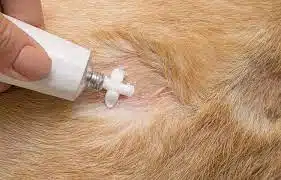Every creature on earth is vulnerable to one disease or another. In the case of animals, specifically dogs, the disease is known as renal dysplasia. Renal dysplasia has been reported in a variety of breeds and is common in younger dogs. Although there is currently no treatment for this disease, the good news, however, is that there are measures to treat symptoms and manage disease progression to make your dog more comfortable. This guide will explain what renal dysplasia is, the causes and symptoms, and how to manage it in your dog.
Understanding Renal Dysplasia and Its Causes
Renal dysplasia is a disorder that causes improper kidney tissue development. Within the kidney are structures known as nephrons. It filters the blood and eliminates waste, keeping nutrients necessary for biological function. When there aren’t enough nephrons, the kidneys fail, hence, allowing the accumulation of toxins and fluid in the body. To put it another way, the severity of renal dysplasia is determined by the number of functioning nephrons present in each kidney.
During normal kidney development, ureter muscles emerge from the kidneys and branch out to form a network of urine-collecting tubules. In a fetus with this disorder, the tubules fail to branch out, resulting in urine buildup and cyst formation. These cysts eventually take the place of the kidney.
Renal dysplasia usually affects dogs and humans, but it is uncommon in cats and horses. This goes so far as to explain our dogs’ similarity to humans. Renal dysplasia is a congenital disorder, which means it exists from birth. Though it’s frequently evident in dogs at a young age, some kinds of renal dysplasia do not manifest until adulthood. Renal dysplasia can affect dogs either unilaterally or bilaterally. Bilateral renal dysplasia, which affects both kidneys, is the most severe type of illness. Unilateral renal dysplasia in dogs can result in one functional kidney and a mild to the moderate manifestation of the disease.
Renal Dysplasia Symptoms
Dogs with renal dysplasia often do not show symptoms of sickness until they develop kidney failure. Puppies, on the other hand, may develop illness shortly after birth or within the first three to six months of life in severe situations. Kidney failure may not occur in dogs with mild to moderate renal dysplasia until they are adults or even seniors.
The symptoms of renal dysplasia in dogs are as follows:
- Depression
- Weight loss
- Bone pain
- Occasional vomiting
- Diarrhea
- Stunted growth
- Hematuria (bloody urine)
- Abnormal bone structure (such as enlarged mandible/maxillae or pathologic fractures)
- Lethargy
- Increased thirst and urination (polydipsia and polyuria[PU/PD])
- Anorexia or reduced appetite.
Read Also: WHY IS MY DOG LIMPING? How to Treat my Limping Dog
Is Renal Dysplasia in Dogs Hereditary in Certain Breeds?
Renal dysplasia in dogs is a hereditary disorder in some breeds. The majority of cases of renal dysplasia are inherent through genes, although it can also occur as a result of prenatal infection. Any dog breed can develop renal dysplasia, but certain breeds are more typically vulnerable. They include:
- Alaskan Malamute
- Beagle
- Boxer
- Chow Chow
- Great Dane
- Bulldog
- Crocker spaniel
- Lhasa Apso
- Norwegian elkhound
- Irish Wolfhound
- Samoyed
Canine Renal Dysplasia Recovery
As I earlier mentioned, the prognosis for renal dysplasia is poor, with symptoms worsening within months of diagnosis. Your dog may, however, benefit from a phosphate-reduced diet. Specific kidney diets have been found to enhance nutrition, delay the beginning of uremia, prevent the progression or development of additional problems, and increase life expectancy.
These renal diets should include:
- Less salt intake. Research has indicated that lowering salt intake can reduce the advancement of the condition.
- A small amount of high-quality protein. Protein breakdown produces hazardous waste products in the bloodstream that must go through the kidneys before elimination.
- Lastly, phosphate levels must be carefully controlled as this mineral is processed by the kidneys.
Because this condition is degenerative, life quality assessment is an important element of management, and it may be suggested to kill your dog as the disease develops to relieve suffering. Given that this is a proven genetic condition, it is suggested that screening tests be performed and breeding from affected dogs be discontinued in cases when the birth parents and littermates are known.
Life Expectancy of Dogs Suffering Renal Dysplasia
The life expectancy of dogs suffering from renal dysplasia varies according to the severity of the disease and the further development of kidney failure. With severe instances of the illness, newborns and early puppies seldom live more than three to six months. Dogs with moderate renal abnormalities often live for one to two years.
When therapies no longer provide a good quality of life, some pet owners choose humane euthanasia, but this is a personal decision that each family should discuss with their veterinarian. Milder types of the disease are less common, but these dogs can have regular lives before symptoms appear.
Treatment of Rental Dysplasia
Tragically, there is no cure for renal dysplasia in dogs, nor is there a specific treatment for the disorder. Nevertheless, treatment is very similar to that of chronic renal failure and is geared toward controlling the disease and providing your dog with the greatest possible quality of life. If your puppy or dog exhibits symptoms of kidney illness, consult your veterinarian immediately. The veterinarian will examine your dog’s symptoms and medical history with you before performing a physical examination. Following that, the veterinarian will collect blood and urine samples for lab tests to examine kidney function. The kidney disease will worsen over time, although treatment may help alleviate symptoms and halt disease progression. Fluid therapy, anti-nausea medications, potassium supplementation, phosphate binders, and appetite stimulants are common treatments for renal dysplasia in dogs.
Other treatments that may be administered include:
- Anti-emetics if your dog is vomiting.
- Oral bicarbonate to treat metabolic acidosis
- Treatment for hypertension management
- Calcitriol (Vitamin D)
- Erythropoietin
.
FAQs On Renal Dysplasia
What is the name of the sickness that kills dogs?
“Parvo” is a virus that kills numerous dogs in the North Country and around the world each year. It often causes vomiting and diarrhea, which frequently contains blood and has a highly unpleasant odor. The puppy becomes drowsy and dehydrated.
What are the common diseases that kills dogs
- canine influenza virus.
- Canine parvovirus (“parvo”) .
- External parasites (ticks, fleas, and mange)
- Heartworms.
- Leptospirosis.
- Canine distemper.
- Canine influenza (“canine flu” or “dog flu”)
What symptoms do sic dogs dispaly
- Dog danger signals.
- Diarrhea.
- Refusal to eat for over 24 hours.
- Excessive thirst or urination.
- Red or swollen gums.
- Difficulty urinating
- Runny eyes or nose
- Repeated vomiting, gagging, sneezing, or coughing.






